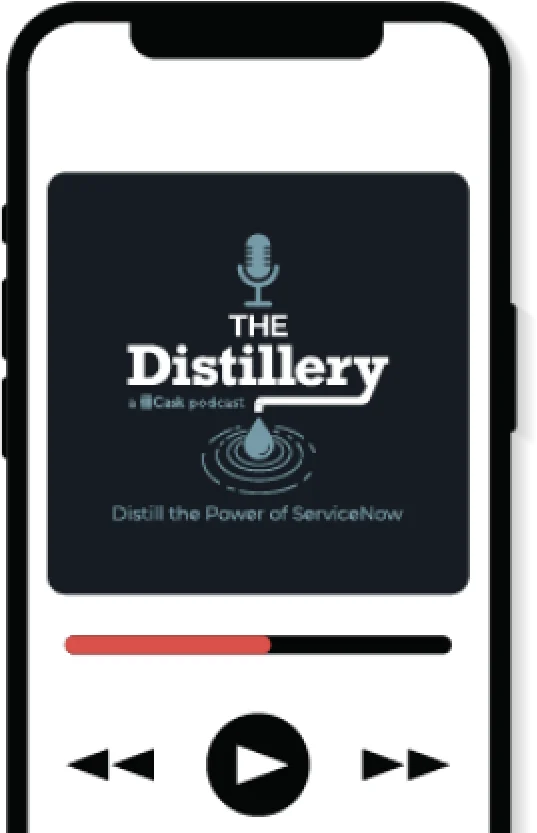Change management is the process of helping organizations adapt to new situations, technologies, or processes. In today's ever-evolving business landscape, change management has become more important than ever. Let’s explore the concept of change management, its importance, and various types of change management. We'll also delve into some strong examples of change management in action.
What is change management?
Change management is a structured approach to transitioning individuals, teams, and organizations from their current state to a desired future state. It involves planning, executing, and monitoring change initiatives to ensure successful outcomes and minimize disruption.
Why is change management important?
Change management is crucial for organizations to remain competitive, adapt to new technologies, and meet evolving customer needs. Effective change management helps organizations avoid costly mistakes, improve employee engagement, and increase profitability.
What are the main types of change management?
There are several types of organizational change, including:
- Transformational change: This type of change involves a significant shift in an organization's culture, structure, or strategy. Examples include mergers and acquisitions, digital transformation, or entering new markets.
- Incremental change: This type of change involves making small, continuous improvements to existing processes or products. Examples include implementing new software or improving workflow efficiency.
- Remedial change: This type of change focuses on fixing problems or addressing specific issues within an organization. Examples include reorganizing teams or addressing employee performance.
Each example of change in this post is identified as transformational change, incremental change, or remedial change.
Key factors for successful change management
Effective change management initiatives require a well-defined change management plan that addresses the following factors:
- Clearly defined goals and milestones
- Buy-in from stakeholders, including employees, management teams, and customers
- Effective communication throughout the change management process
- Support from change agents who champion the change initiative
- Adaptability and a willingness to learn from mistakes
- A sense of urgency to drive progress and maintain momentum
What are strong examples of change management?
The five examples below showcase various types of change management, as organizations adapt and innovate to address pressing issues, improve efficiency, and optimize operations.
Example 1: 7-Eleven's successful change through a holistic approach and platform integration
7-Eleven acquired 5,000 new stores, which already employed an in-house maintenance model without outside contractors. To integrate this model across all locations and maximize efficiencies, 7-Eleven built a platform with a centralized portal for requesting maintenance support and supplies. They developed vendor onboarding process workflows and store maintenance workflows on the ServiceNow network.
They also collaborated with their ServiceNow partner to design a user-friendly portal through focus groups and wireframes. Technicians can now manage their truck inventory in the portal, request parts from other technicians, and complete work orders more efficiently, saving time and money on inventory and maintenance costs.
What the 7-Eleven example shows about change management
This story showcases how 7-Eleven effectively integrated two different maintenance models into a new, larger brand. The holistic approach to problem-solving involved addressing multiple dimensions of the issue, emphasizing user adoption, and ensuring a seamless transition.
The close collaboration between 7-Eleven and the ServiceNow partner during the design process ensured that the new platform met the needs of all stakeholders, including technicians and stores. The multi-streamed implementation approach, with some team members focusing on application development and others on UX/UI, allowed for a more comprehensive solution. By reducing work order completion time and optimizing inventory management, 7-Eleven effectively managed the change, ultimately benefiting both the company and its customers.
Change type: transformational change
Example 2: Emergency rental assistance subsidy program at the City of Los Angeles
During the COVID-19 pandemic, approximately 500,000 households in Los Angeles needed temporary rent assistance. The City of Los Angeles collaborated with their ServiceNow partner to develop a custom application for managing $103 million in Federal CARES Act funding for the ERAS program. Within two months, Phase 1 of the ERAS capability was delivered, including a public-facing Renters Relief Application System. In the initial enrollment period, over 250,000 rental relief applications were received.
Phase 2 involved the consultant helping the city narrow down applicants based on specific criteria. The back-end workflow included data collection, award notification, reporting, application tracking, appointment scheduling, and secure data storage. The ERAS application ensured that applicants met the criteria for receiving funds.
Change management in Los Angeles’ emergency rental assistance initiative
The City of Los Angeles’ collaboration with their ServiceNow partner exemplifies effective change management. They quickly responded to the challenges posed by the COVID-19 pandemic by identifying the need for rental assistance and securing funding. The city then engaged a skilled partner to develop a custom application that streamlined the entire process of allocating, verifying, and disbursing funds to eligible recipients.
The city’s ability to adapt and innovate in the face of unprecedented challenges demonstrates strong change management principles. The collaboration with their consultant allowed them to rapidly implement a solution that directly addressed the needs of the community. By effectively managing change, the city was able to provide essential rental assistance to those most affected by the pandemic.
Change type: remedial change
Example 3: Ginnie Mae's transformation—a story of effective change management
Ginnie Mae, a government-owned corporation within the Department of Housing and Urban Development, sought to become a leader in efficiency, employee and customer focus. Facing challenges with their decentralized customer support system, Ginnie Mae experienced a lack of transparency, limited insight into customer problems, and unknown consistency. To address these issues, Ginnie Mae partnered with their ServiceNow consultant to create a comprehensive solution.
The ServiceNow partner developed a centralized Customer Support Center and streamlined processes, which improved visibility, consistency, and efficiency. This transformation involved creating a user-friendly case form, developing user guides, and providing training to ensure adoption of the new process. As a result, Ginnie Mae now has real-time data on call center volume, metrics, and customer pain points, enabling them to make data-driven decisions and improvements.
A showcase of change management
This story illustrates effective change management in several ways. First, Ginnie Mae recognized the need for change and sought the help of a ServiceNow partner to address the challenges in their customer service operations. The consultant's involvement in identifying areas of focus and developing a suitable solution showcased a collaborative approach to change management.
Second, the new Customer Support Center and processes were designed with the end-users in mind, ensuring a smooth transition and rapid adoption. The provision of user guides and training emphasized the importance of equipping employees with the necessary skills and knowledge to adapt to new workflows.
Finally, Ginnie Mae's ability to monitor progress and make data-driven decisions showcased the benefits of the transformation. The organization was able to identify errors and inefficiencies in their processes, leading to improvements such as short tutorial videos, knowledge articles, and faster response times.
Change type: transformational change
Example 4: Successful change management at the US Forest Service
The National Interagency Fire Center (NIFC) of the US Forest Service transitioned from an outdated Resource Ordering and Status System (ROSS) to the new Interagency Resource Ordering Capability (IROC) system. ROSS had become inefficient and cumbersome, resulting in data inconsistencies, duplicated efforts, and errors in resource allocation.
In response, various federal partners along with NIFC’s ServiceNow partner, including representatives from multiple agencies and state governments, collaborated to develop IROC as a modern, platform-agnostic, web-based system to support ordering, tracking, and managing resources for wildland fires and all-hazard incidents. IROC offers improved integration with other applications, streamlined dispatching, and real-time management of resources and personnel qualifications, ultimately shortening response times and enhancing firefighting efforts.
Change management in action
This story exemplifies effective change management through the successful transition from an outdated system to a new, more efficient one. The development and implementation of IROC involved extensive interagency collaboration, as numerous stakeholders worked together to identify and address the shortcomings of the existing system. By building IROC from the ground up and integrating it with other applications, the team behind the project facilitated seamless communication and data sharing among agencies, overcoming the challenges posed by ROSS.
The example also highlights the ongoing efforts to improve IROC's capabilities and functionalities, reflecting a commitment to continuous improvement and adaptation. The overall success of the transition, the clear identification of problems with the previous system, and the ongoing enhancements to the new system all demonstrate effective change management in practice.
Change type: incremental change
Example 5: City of San Antonio's swift solution for employee health status tracking
As the COVID-19 pandemic continued to grow, the City of San Antonio needed an efficient way to communicate with and monitor the work status of their remote employees. The city enlisted the help of a ServiceNow consultant to transition from manual tracking methods to an automated self-reporting system.
Within 48 hours, the consultant configured and deployed the ServiceNow Emergency Outreach and Emergency Self Report applications, which allowed employees to self-report their health, safety, and quarantine status. The City of San Antonio rapidly scaled this solution to over 15,000 employees, demonstrating successful implementation of a new system.
Embracing effective change management
The City demonstrated the importance of quickly responding to a pressing issue—the COVID-19 pandemic—by adapting and implementing new processes. They also recognized the need for an external partner to support their change efforts, enlisting the expertise of a ServiceNow consultant to develop and implement a more efficient system for monitoring employee health status.
This collaboration enabled the city to move away from inefficient manual methods to an automated system, ensuring a faster and more accurate response to the evolving pandemic. The success of this change management effort highlights the City of San Antonio's commitment to protecting its employees and community during a challenging time.
Change type: remedial change
The role of project management in change management
Project management is an essential aspect of change management, as it helps ensure that change initiatives are executed on time, within scope, and according to budget. By integrating project management principles into the change management process, organizations can improve coordination, manage resources more effectively, and monitor progress towards achieving their desired outcomes.
Organizational change management and project management go hand-in-hand, as both disciplines focus on accomplishing strategic objectives through the successful implementation of new processes or products. By incorporating effective project management techniques, organizations can enhance their change management strategy and increase the likelihood of success.
Key components of a robust change management strategy
A successful change management strategy includes the following components:
- An organizational change management model: Selecting a proven change management model, such as the ADKAR or Kotter's 8-Step Process, provides a structured framework for managing organizational change and ensuring that all aspects of the change initiative are addressed.
- Interactive communication: Engaging stakeholders through interactive communication methods, such as town hall meetings, workshops, or online forums, can help build support for the change initiative and address any concerns or resistance that may arise.
- Human resources involvement: Involving the human resources department in the change management process is crucial, as they can help with employee training, performance management, and addressing any organizational culture or structure changes that may be required.
- Short-term wins: Demonstrating short-term successes can help build momentum and reinforce the need for change. By celebrating these milestones, organizations can maintain a positive atmosphere and motivate team members to continue working towards the larger goals.
Adapting to major change and overcoming resistance
Managing organizational change can be challenging, as it often involves overcoming resistance and breaking away from the status quo. Change programs need to address potential barriers to success, such as employee apprehension or lack of buy-in from key stakeholders.
To successfully navigate major change, organizations should consider the following strategies:
- Align the change initiative with the organization's vision and values
- Clearly communicate the reasons for change and the benefits it will bring to the organization
- Provide adequate resources and support for employees during the transition
- Actively involve employees in the change process, encouraging input and feedback
- Monitor progress and adjust the change management strategy as needed
We’re with you for what comes next
You're working in a rapidly shifting environment.
Global dynamics, AI advancements, heavy competition–the only certainty is change.
We get it. And we’re here to help you harness the full potential of ServiceNow to simplify transformation.
Let's navigate the future together.



Master change with Cask’s ServiceNow expertise
Navigate change confidently with Cask, your trusted ServiceNow partner. Our proven strategies in change management transform challenges into opportunities, ensuring a smooth transition to enhanced digital workflows.
We’re with you for what comes next
You're working in a rapidly shifting environment.
Global dynamics, AI advancements, heavy competition–the only certainty is change.
We get it. And we’re here to help you harness the full potential of ServiceNow to simplify transformation.
Let's navigate the future together.



Recommended articles
LET'S INNOVATE
Book a conversation
Cask expertise, on tap, to understand and align to your unique challenges and desired outcomes. Our team will contact you to better understand your needs and set up a meeting with Cask advisors, aligned to your goals.



Sign up for our Distillery Podcast
Stay up to date with the latest episodes







